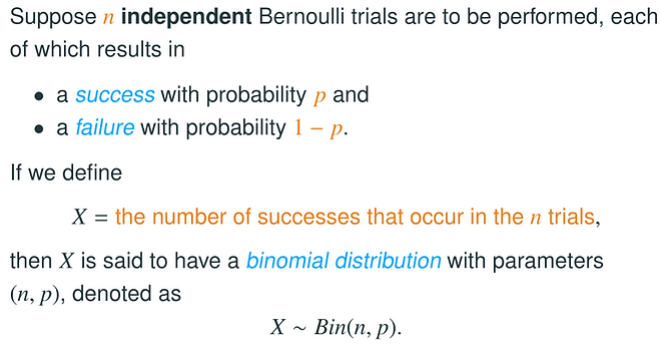Binomial distribution model
Binomial in definition is an expression (= a mathematical statement) that has two terms (= numbers or symbols) that are not the same. For example, \(4x + y\) is a binomial.
Binomial distribution is a probability model that is associated with situations involving two outcomes, labeled as success or failure.
Properties
The following conditions must hold for a binomial distribution:
- A fixed number of trials involving a random process. It is often denoted as n.
- The outcome of each trial can be classified into one of the two groups: success and failure.
- The trials are independent, meaning the outcome of one trial does not influence the outcome of any other trail. For example, flipping a coin at N time does not change the result of the flipping at N+1 time.
- The probability of success is the same for each trial. Let p be the probability of success, which means 1-p is the probability of failure.
Definition

Describe a binomial distribution
Describe with the PMF
The probability mass function (PMF) for a binomial random variable X is
$$P(X=k)=\binom{n}{k}p^k(1-p)^{n-k}, k=0,1,...,n$$
where
- n is the number of trials
- k is the specified number of successes
- n-k is the number of failures
- p is the probability of success on any given trial
- 1-p is the probability of failure on any given trial
Describe with the CDF
The cumulative density function (CDF) of X is the probability that X is less than or equal to any number x, and is denoted by F(x). For the binomial model, the cdf is
$\displaystyle\sum\limits_{k=0}^{n}P(X=k)=\displaystyle\sum\limits_{k=0}^{n}\binom{n}{k}p^k(1-p)^{n-k}$